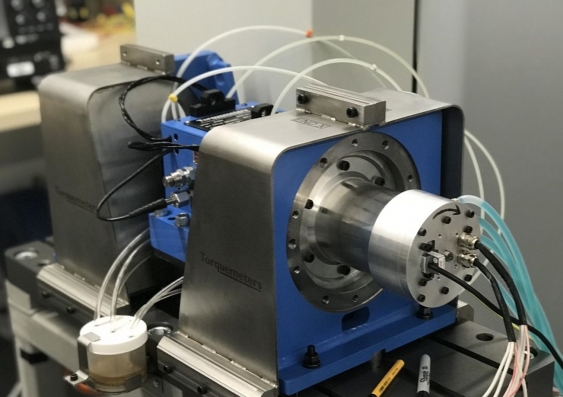The design of the prototype IPMSM type motor was inspired by the shape of the longest railroad bridge in South Korea and has achieved speeds of 100,000 revolutions per minute.
The maximum power and speed achieved by this novel motor have successfully exceeded and doubled the existing high-speed record of laminated IPMSMs (Interior Permanent Magnet Synchronous Motor), making it the world’s fastest IPMSM ever built with commercialized lamination materials.
Most importantly, the motor is able to produce a very high power density, which is beneficial for EVs in reducing overall weight and therefore increasing range for any given charge.
The new technology, developed by a team headed by Associate Professor Rukmi Dutta and Dr. Guoyu Chu from the UNSW School of Electrical Engineering and Telecommunications, is an improvement on existing IPMSMs, which are predominantly used in traction drive of electric vehicles.
An IPMSM type motor has magnets embedded within its rotors to create strong torque for an extended speed range. However, existing IPMSMs suffer from low mechanical strength due to thin iron bridges in their rotors, which limits their maximum speed.
But the UNSW team has patented a new rotor topology that significantly improves robustness, while also reducing the number of rare earth materials per unit of power production.
Bridging the future
The new design is based on the engineering properties of the Gyopo rail bridge, a double-tied arch structure in South Korea, as well as a compound-curve-based mechanical stress distribution technique.
And the motor’s impressive power density potentially offers improved performance for electric vehicles where weight is extremely important.
“One of the trends for electric vehicles is for them to have motors which rotate at higher speeds,” says Dr. Chu.
“Every EV manufacturer is trying to develop high-speed motors and the reason is that the nature of the law of physics then allows you to shrink the size of that machine. And with a smaller machine, it weighs less and consumes less energy, and therefore that gives the vehicle a longer range.
“With this research project we have tried to achieve the absolute maximum speed, and we have recorded over 100,000 revolutions per minute and the peak power density is around 7kW per kilogram.
“For an electric vehicle motor we would actually reduce the speed somewhat, but that also increases its power. We can scale and optimize to provide power and speed in a given range—for example, a 200kW motor with a maximum speed of around 18,000 rpm that perfectly suits EV applications.
“If an electric vehicle manufacturer, like Tesla, wanted to use this motor then I believe it would only take around six to 12 months to modify it based on their specifications.
“We have our own machine design software package where we can input the requirements of speed, or power density and run the system for a couple of weeks and it gives us the optimum design that satisfies those needs.”
The new IPMSM prototype motor was developed using the UNSW team’s very own AI-assisted optimization program which evaluated a series of designs for a range of different physical aspects—namely electrical, magnetic, mechanical, and thermal.
The program evaluates 90 potential designs, then selects the best 50 percent of options to generate a new range of designs and so on, until the optimum is achieved. The final motor is the 120th generation analyzed by the program.
Apart from electric vehicle, the motor has many other potential applications. One of them is large heating, ventilation, and air conditioning (HVAC) systems which require high-speed compressors to use a new form of refrigerant which significantly reduces the impact on global warming.
It can also be utilized in high-precision CNC machines that are highly demanded by the aviation and robot industries. The UNSW high-speed motor technology can allow such high-precision CNC machines to mill or drill with minimal diameters.
Another application is as an IDG (Integrated Drive Generator) inside an aircraft engine to provide electrical power for aircraft systems.
The UNSW team’s new motor also offers a significant cost advantage over existing technology and uses less rare earth materials such as neodymium.
“Most high-speed motors use a sleeve to strengthen the rotors and that sleeve is usually made of high-cost material such as titanium or carbon fiber. The sleeve itself is very expensive and also needs to be precisely fitted and that increases the manufacturing cost of the motor,” Dr. Chu says.
“Our rotors have very good mechanical robustness, so we don’t need that sleeve, which reduces the manufacturing cost. And we only use around 30% of rare earth materials, which includes a big reduction in the material cost—thus making our high-performance motors more environmentally friendly and affordable.”








